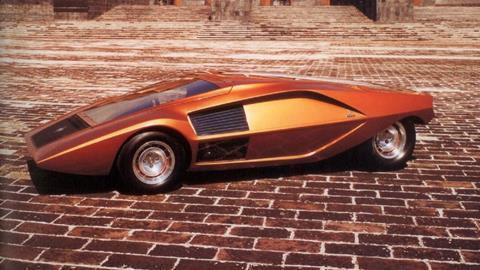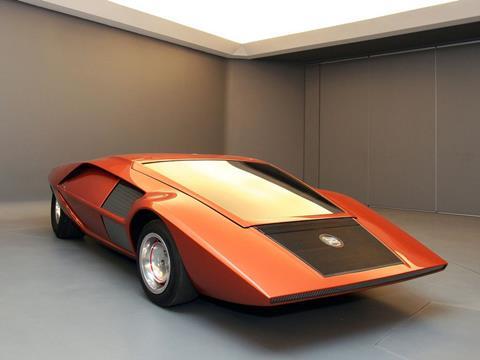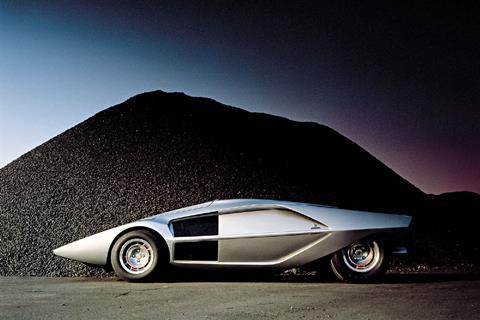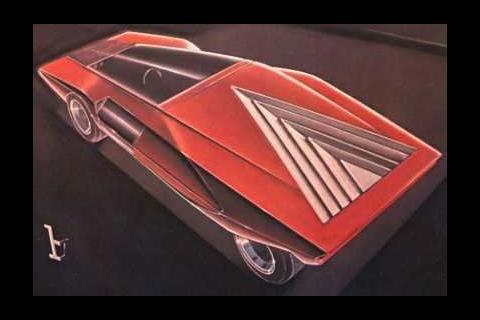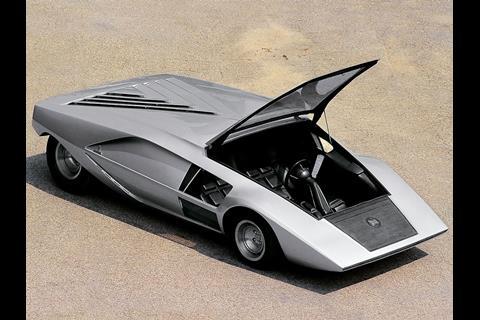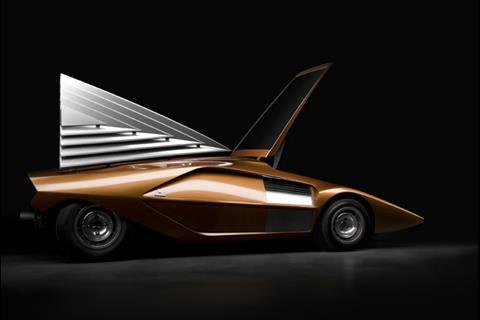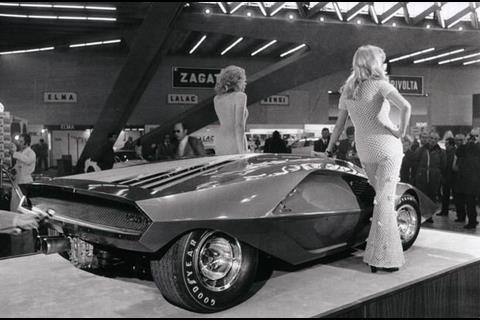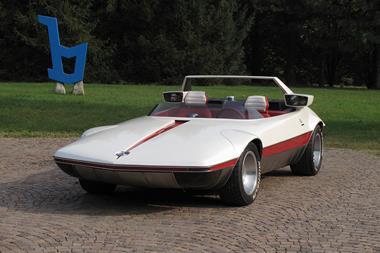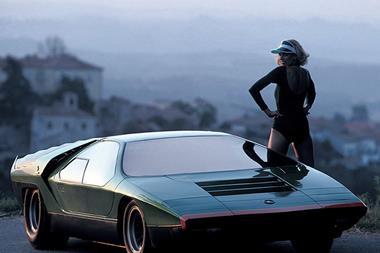The Lancia Stratos Zero took the 1970 Turin Motor Show by storm, propelling designer Marcello Gandini into superstardom
In 1969, Nuccio Bertone wished to expand his portfolio by getting Lancia’s attention, luring the company away from its long relationship with Pininfarina and Zagato.
With a clear strategy in mind, he bought a friend’s Lancia Fulvia. The car’s bodywork had been damaged in an accident, but most of its mechanical components, including the engine and suspension, remained intact. Bertone planned to reinvent the Fulvia with a mid-engine layout, so it was capable of competing on the world rally stage against the Alpine A110 and Ford GT70.
The project was handed to Bertone’s young prodigy Marcello Gandini who saw an opportunity to push his radical wedge design to the extreme. He first explored it on the Alfa Romeo Carabo, then on the Autobianchi Runabout, but the lines of the Stratos Zero took it to a whole new level.
From its full-width ultra-thin headlights to its black rear panel, the entire design used clean, taught lines that seamlessly integrated innovative graphics over its faceted panels. One of the challenges set by the team at Bertone was to see just how low they could build the car. At only 84 centimeters tall, its unbelievable proportions looked extremely dramatic from every angle.
Due to the cabin being set so far forward, the flat nose was perfectly aligned with the windscreen; the latter unusually wider at the top than at the base. Behind the fenders, the offset between the arches and the windows created a discrete triangular pocket accommodating the rear-view mirrors.
The profile was marked by its diamond construction, slightly tilted forward, yet balanced by the verticality of the DLO graphic. Just like the Marzal, a rising line split the body and the DLO horizontally into symmetrical halves. This line shot up towards the ultra-wide, truncated tail revealing the ridiculously wide rear tires. A total of 84 bulbs were used to create the tail-lamp graphic around the black mesh panel.
Last but not least, the triangular-louvered engine cover has to be the most artistic component of the whole car, opening to the side like the top of a grand piano. Conventional doors would have been totally inappropriate on this car. Instead, you accessed the cabin by way of a flip-up windscreen; the black graphic at the base of the windscreen is actually a rubber mat that protected the paint. Once seated in the tight cockpit, the driver’s legs ran each side of the tilting steering column, with the gearstick to the right, and a futuristic instrument panel to the left. Various levels and gauges were located behind a hand-etched sheet of perspex.
Nuccio Bertone drove the car to Lancia’s headquarters himself to show them his creation, and unsurprisingly a production version of the Stratos soon became a reality. Although the 1971 Lancia Stratos bore little resemblance to the show car, it became a legend in its own right thanks to its fantastic design and excellent performance on the world’s rally stages.
The concept was initially called ‘Stratolimite’ - the limit of the stratosphere. Its design illustrated what happens when two visionary and enthusiastic minds followed their passion to create what is undoubtedly one of the best concept cars of all time.
Designer Marcello Gandini
First seen 1970 Turin Motor Show
Height 840mm
Length 3,580 mm
Wheelbase 2,220 mm
Engine 1,584cc, V4, 115bhp









